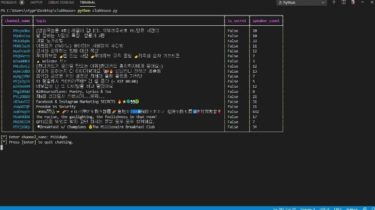Clubhouse API written in Python
Clubhouse API written in Python FOR REFERENCE AND EDUCATION PURPOSES ONLY. THIS DOES NOT COME WITH ANY KINDS OF WARRANTY. clubhouse-py is originally developed for the sake of interoperability. Standalone client is also created with very basic features, including but not limited to the audio-chat. Please note that you may get a permanent ban for sending invalid API requests. Server’s ratelimit and security mechanisms are quite strict. Demo Please click the image to open a Youtube video demo. Requirements Windows […]
Read more








